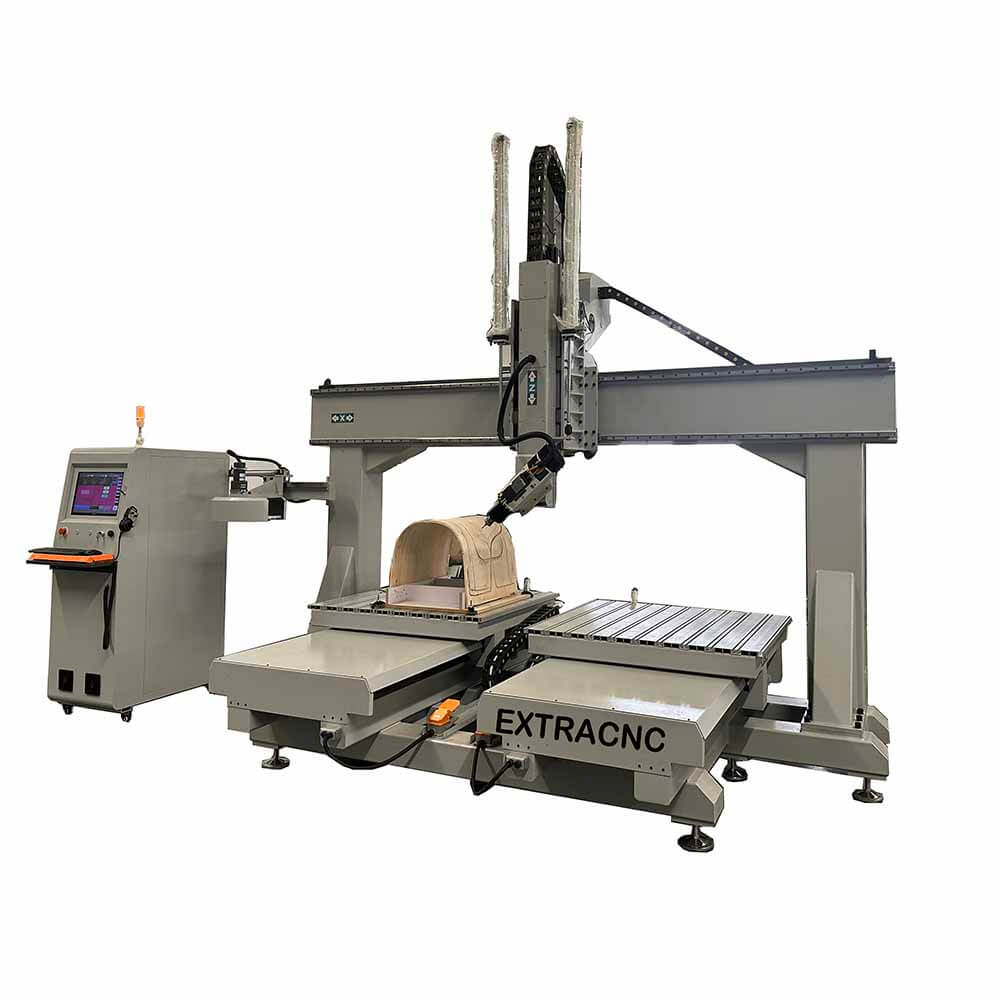
Related Blogs
Explore the world of 5-axis CNC routers! Discover their precision, key features, and applications in woodworking and manufacturing. Get tips for choosing the right machine for your projects!
Whether you’re working in woodworking, metalworking, prototyping, or sculpture, the type of CNC router you choose can dramatically affect your production capabilities. Among the many options available, 4 axis and 5 axis CNC routers are often compared. But which one is right for your business? In this article, we’ll break down the differences between the two, examine their advantages and limitations, and help you decide which router suits your manufacturing or creative needs best.
A 4 axis CNC router adds a rotary axis (usually the A-axis) to the standard 3-axis setup (X, Y, and Z). This rotary axis allows the workpiece to rotate during the cutting process, enabling the machine to engrave or mill around the surface of cylindrical or curved objects.
A 5 axis CNC router includes two additional axes—typically the A-axis and C-axis, allowing the tool or the workpiece to rotate in multiple directions. This provides greater freedom to machine intricate geometries and compound curves in a single setup.
| Feature | 4 Axis CNC Router | 5 Axis CNC Router |
|---|---|---|
| Axes of Movement | X, Y, Z, + A | X, Y, Z, + A and C (or B) |
| Workpiece Rotation | Yes (1 axis) | Yes (2 axes or multi-directional) |
| Complexity Handling | Medium | High |
| Ideal Applications | Columns, chair legs, partial 3D | Complex molds, statues, aerospace parts |
| Programming | Moderate | Advanced |
| Price Range | Moderate | Higher |
Both 4 axis and 5 axis CNC routers offer powerful capabilities, but they serve different purposes. The 4 axis machine strikes a great balance between functionality and affordability, making it ideal for furniture and decorative carvings. Meanwhile, the 5 axis CNC router stands out in industries that demand complex surface machining and ultra-high precision.
Understanding your production goals, material types, and design complexity is key to making the right investment. Whether you’re looking to expand your creative boundaries or optimize industrial workflows, choosing the right CNC router will set the foundation for success.
Explore the world of 5-axis CNC routers! Discover their precision, key features, and applications in woodworking and manufacturing. Get tips for choosing the right machine for your projects!
Send us your request for CNC machines and get an official price within 10 minutes!